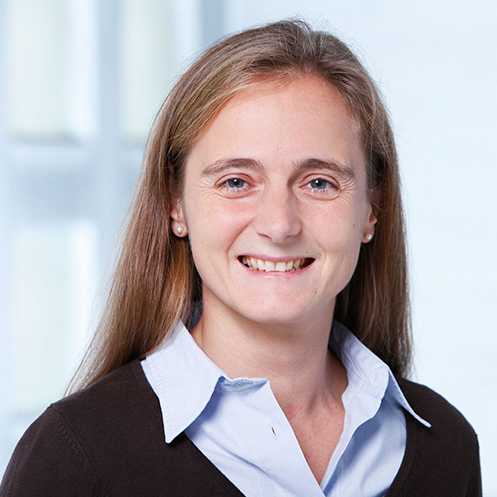Measuring forests with radar
To find out more about the Earth’s biomass, Irena Hajnsek is collecting data from the air.
Irena Hajnsek has recently returned from Africa – Gabon, to be exact – where the professor of Earth observation and remote sensing was looking into airport usage charges and permits for transmitting signals. In February 2016, she hopes to return to this central African country as part of a team expedition, flying into the jungle with the other researchers and using airborne radar provided by the external pageGerman Aerospace Centercall_made to collect data that they can use to calculate forest biomass.

“Our aim is to find out more about the properties that are specific to the tropical rainforest in Africa, gain some experience with the sensors and test out the algorithms that we use to calculate biomass,” explains Hajnsek. This particular expedition, however, marks just one step in a much larger mission known as Biomass. Set up by the European Space Agency (ESA), its goal for 2020 is to launch a space satellite that will then record data from the world’s forests once a year. “Climate research really needs to know more about terrestrial biomass – forests account for roughly 50% of the carbon held in terrestrial plants” says Hajnsek, who will be acting as scientific director of the upcoming airborne survey. “And CO2 trading certifications are another area where it’s vital to have accurate information about terrestrial biomass and how it changes over time.”
So how exactly do you measure a forest? The 45-year-old expert explains: “First, we transmit electromagnetic signals from an aircraft or a satellite to Earth. These hit different types of structures, sending a range of different signal strengths bouncing back to us.” She uses the strength and path length of the received signal to calculate height-related data – how tall a treetop is, for instance. “If we want to calculate the mass of the forest, however, we also need information on how high the forest floor is. That requires electromagnetic waves that can penetrate through the forest all the way to the ground,” continues Hajnsek, who is also involved in two satellite missions as scientific coordinator.
The last mission commenced in 2012 and was given the name TanDEM-X in reference to several aspects: the two satellites working as a pair, the digital elevation measurement or DEM for short, and the threecentimetre radar wavelength represented by X for X band. Researchers are using the data to generate a global, digital terrain model that is accurate down to the metre. It’s an achievement Hajnsek is very proud of: “This kind of unified height model that covers the entire globe is a real first. Scientists across the world can use it to do things like create map data. It will also provide a springboard for several other areas worth exploring.”
Despite their other uses, X band wavelengths are too short to penetrate dense forest and hit the ground: “This is where the 23-centimetre L band and the 80-centimetre P band come in.” Germany has already proposed the idea of launching a new satellite mission using longer wavelength Tandem-L, something the Japan Aerospace Exploration Agency is also keen to participate in, and which would also involve measuring biomass – albeit several times a year in order to look at the effects of the changing seasons. It is another project in which Hajnsek has a stake, although she states that it has not yet secured the funding it needs.
Returning to the Biomass project, the ESA has decided that its next step should be to take measurements from space using a P-band system – another first. This will require an initial round of testing. “We’ve already explored typically northern boreal forests in Sweden, and temperate forests in Germany,” says Hajnsek. “What we’re now missing is information about tropical forests. That means highly dense tropical rainforests, mangrove forests and savannah forests.” This is exactly what she is going to measure early next year in Gabon.
